Everybody loves Australia’s animals. Australia is full of creatures you can’t see anywhere else in the world. It’s not just about how cool they look though. These creatures help to make sure everything runs as it should in the natural world. However, all is not well.
Australia’s unique wildlife makes up part of the Earth’s biodiversity. Each animal and plant have their own job. Some help clean the air, some help keep the soil rich for growth, and some keep other creatures from becoming too many.
If we lose the unique wildlife, that’s not just a problem for Australia. It means people all over the world lose out on seeing these amazing creatures. More importantly, we could mess up that big machine i.e the ‘Ecosystem’.
The Big Threats
There are four big things causing problems for our wildlife: habitat loss, deforestation, climate change, and hunting. Habitat loss and deforestation happen when we cut down forests, build cities, and mine for resources. This can leave animals without food or shelter. Climate change can stop a creature’s regular routine, which can make life tough. And as we all know hunting is: killing innocent animals for sport and entertainment like they don’t belong on earth.
In this article, we’re going to discuss about some of our most endangered creatures. We’ll also explore how we can all do our part to protect them.
These are the 10 Animals On The Brink Of Extinction In Australia
|
1. Koala
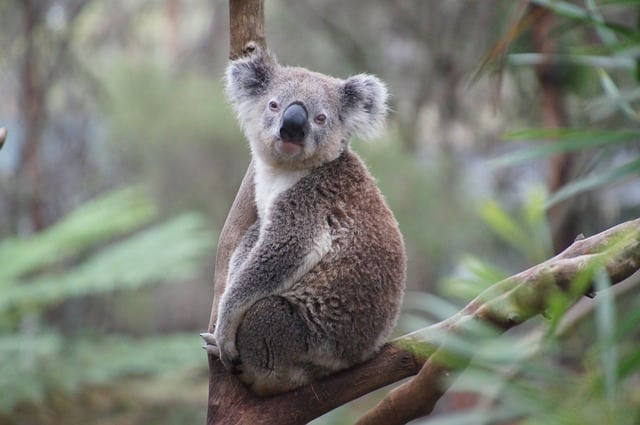
Koalas are one of Australia’s most beloved animals. But these cute critters are facing some serious problems. A big problem for koalas is losing their homes. Koalas love to munch on eucalyptus leaves. But many eucalyptus trees are being cut down to make space for towns, roads, and farms. Less food and fewer places to live make life tough for koalas.
On top of that, climate change is making weather patterns less predictable. Sometimes, there are longer spells of hot, dry weather causing wildfires. These fires can destroy large areas of koala habitat in a short time. Within the past three years, the koala population has down from eight million to 32,000.
Conservation Efforts
Efforts are being made to help save koalas and their habitats. Some of these include making new koala parks and planting more eucalyptus trees.
However, these efforts face some challenges. For one, it takes a long time for a eucalyptus tree to grow big enough for a koala. Also, even when efforts to protect habitats are successful, other dangers like car accidents and dog attacks still threaten koalas.
2. Numbat
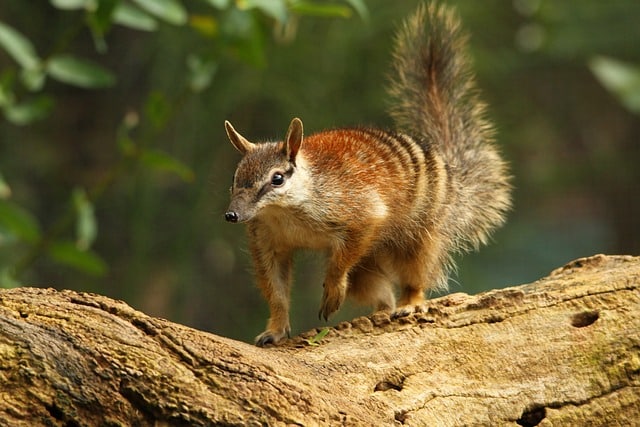
The numbat is one nifty creature! This little guy mostly eats termites. As a only daytime marsupial, it’s special – but it’s also struggling. Numbats have a thin, pointy snout and a very long, sticky tongue. Both help them hunt for termites in wood and soil. Normally, numbats like to live in woodland areas where the soil is sandy. Now, they are found in only a few spots in Western Australia.
Threats and Population Status
Like the koala, numbats are losing their homes because of land clearing. But, they also face danger from foxes and cats that were brought to Australia by people. These creatures aren’t scared of hunting in the day, which puts numbats in danger.
Right now, there are only a couple thousand numbats left in the country. They are one of the most endangered mammals in Australia. Every numbat counts!
3. Mountain Pygmy-possum
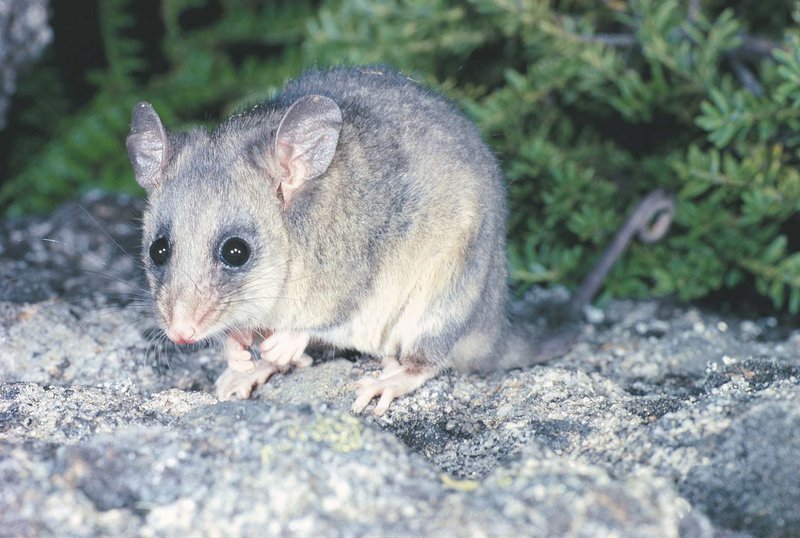
The tiny Mountain Pygmy-possum is another creature that only lives in Australia. It loves the cold and is the only mammal we know of that truly hibernates in Oz. These small possums are big fans of the chilly alpine regions. They burrow under rocky boulder fields and hibernate there during the Winter. When they’re not sleeping, they mostly munch on moth larvae.
Impact of Climate Change on Hibernation and Survival
When Spring comes and the weather gets warmer, Mountain Pygmy-possums wake up from hibernation. But because of climate change, Spring is arriving earlier. When the possums wake up, their food isn’t ready yet because it’s still too cold for the moths to come out.
Climate change also means less snow. Less snow means the possums’ homes are less insulated, making them colder in winter. The species is highly vulnerable with only about 2,000 individuals left in the wild. Too much cold can be a problem, even for an animal that loves the chill!
4. Regent Honeyeater
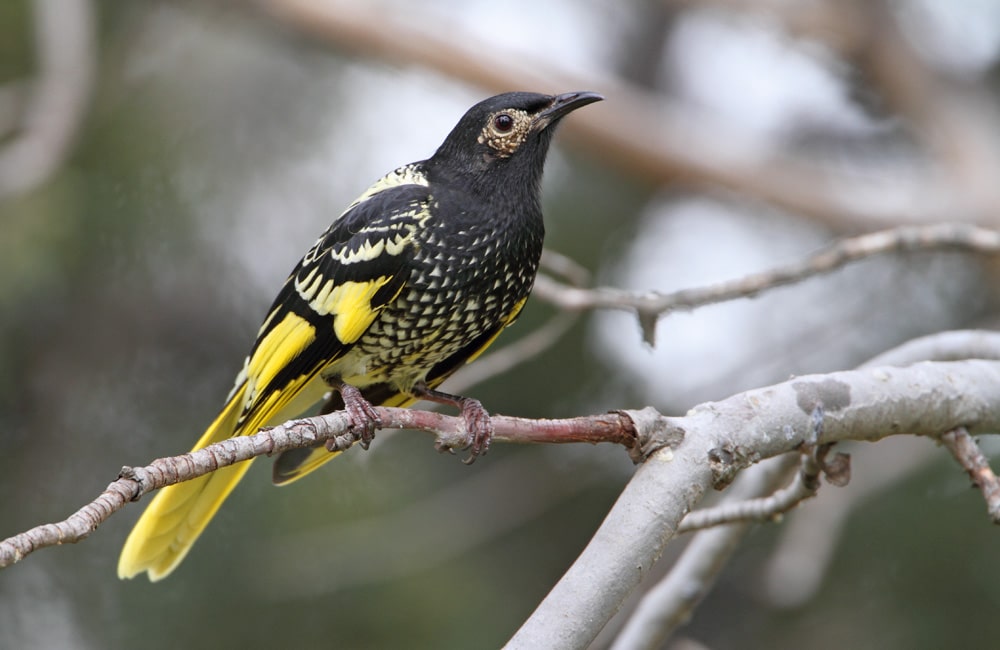
The Regent Honeyeater is a beautiful bird with a loud and clear voice. It’s not just nice to listen to; it plays a big part in keeping forests healthy. But these forests are now too quiet, and that’s not a good sign.
Role in Ecosystem and Current Status
This bird is a pollinator, which means it helps plants grow by carrying pollen from one flower to another. Lately, it’s gotten hard both to spot and to hear them. They used to fly around in big flocks across Eastern Australia but now, they’re very rare.
According to the Environment Protection and Biodiversity Conservation Act 1999 only 300 individuals are remaining in the wild.
5. Gouldian Finch
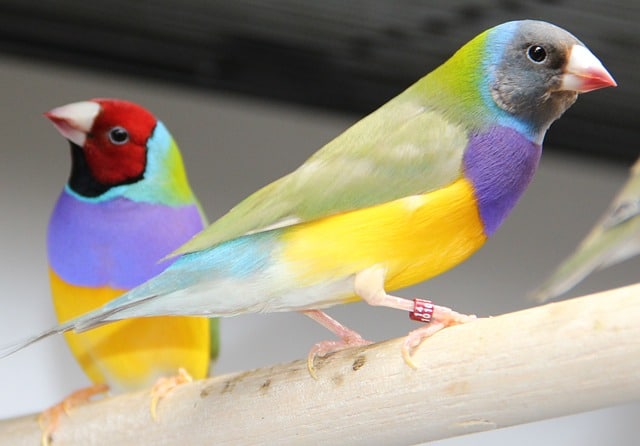
The Gouldian Finch is like a little rainbow with wings, flashing bright colors as it flies. It’s a real treasure and it makes Australia’s bird life even more special. But now, there are way fewer of them than there used to be.
Gouldian Finches have feathers in many colors like red, green, and yellow. They’re part of Australia’s natural heritage. People from all over the world come just to see these little flying rainbows.
Reasons Behind Decline and Status
Their numbers are dropping because there aren’t as many of the grass seeds they eat anymore. These seeds get lost when we turn wild land into farms or towns. Big grassy areas used to burn a little bit at a time. Now, when they burn, it’s huge and that can make a whole season’s worth of seeds go up in smoke, leaving the finches with no food. As of 2021, the Gouldian finch population is estimated to be less than 2,500 adult finches in the wild.
6. Orange-bellied Parrot
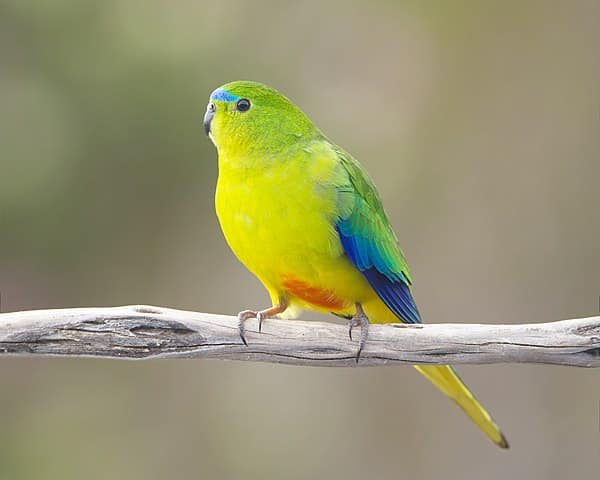
The Orange-bellied Parrot is a small, brightly colored bird that takes on long journeys between the cold Southern parts of Australia and the mainland. Every year, the Orange-bellied Parrot travels from Tasmania to the South Australian and Victorian coasts to spend the winter.
This migration is risky and tiring, and with fewer places to rest and eat along the way, it’s becoming even harder. Also, their breeding sites in Tasmania are losing the specific plants they need to survive.
Initiatives for Recovery
To save these unique parrots, conservationists are trying a few different things. They are breeding them in safe places and then letting them go into the wild. They are also working to protect and bring back the natural areas where the parrots live and stop by during their migration.
According to agriculture.gov.au, there are about 50 orange-bellied parrots remaining in the wild and a captive breeding population of around 320 individuals.
7. Eastern Quoll
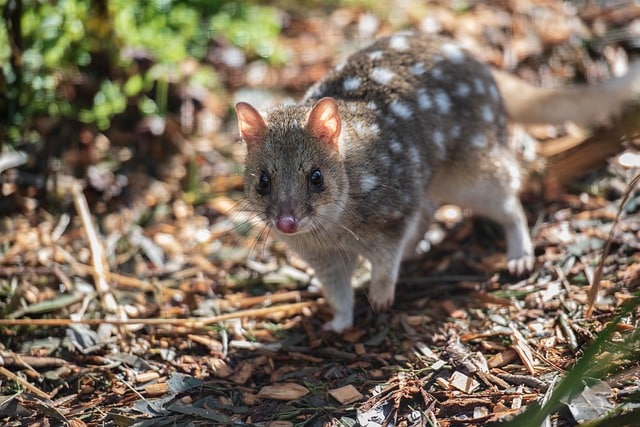
The Eastern Quoll, a small but fierce predator, used to be found all over southern Australia. Now, they are mainly just in Tasmania. The nocturnal creature plays a key part in controlling pest populations, like insects and small rodents. But with the arrival of foxes and cats in Australia, plus losing their homes to land clearance, the number of Eastern Quolls has dropped fast.
Recovery Efforts and Current Population
To bring them back, there are projects to breed Eastern Quolls in safe places and then reintroduce them into their natural habitats. The WWF is also working to reintroduce eastern quolls to Booderee National Park in Jervis Bay. These projects also aim to teach people about the Quoll’s role in the ecosystem to get more support for saving these unique animals.
According to the IUCN Red List, the total population of the Eastern Quoll was estimated to be between 10,000 and 12,000 mature individuals.
8. Long-footed Potoroo
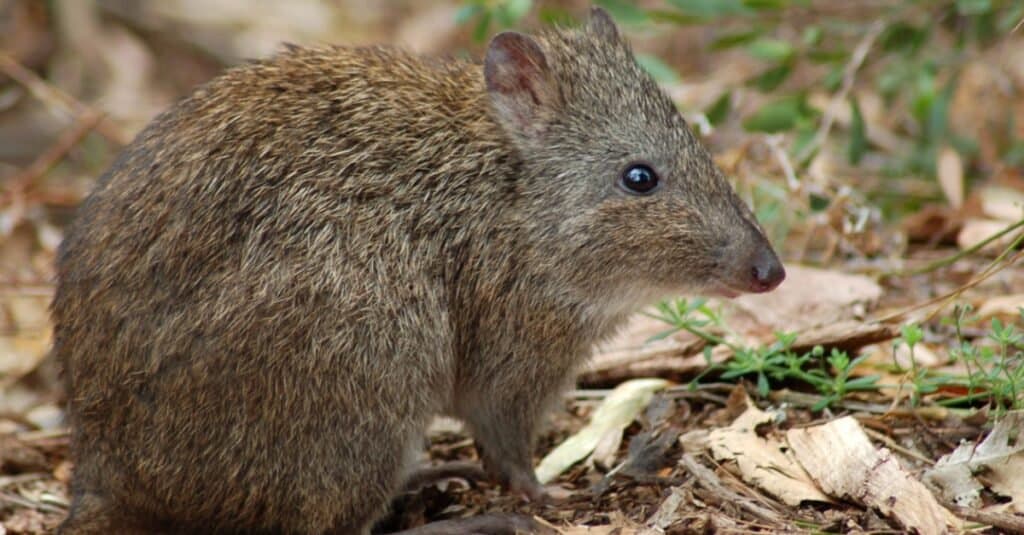
Long-footed Potoroos are unique Australian mammals that are similar in appearance to a small kangaroo. However, they exhibit behaviors more akin to rodents, frequently foraging for food on the forest floor.
The biggest threat to these creatures is loss of habitat due to logging and land clearing for agriculture. Predation by foxes and cats is another significant factor contributing to their decline.
Conservation Efforts and Population
Conservation strategies largely revolve around habitat protection, reduction of predation, and population monitoring to ensure their numbers don’t continue to dwindle. Currently, these creatures are classified as endangered. Although exact estimates are hard to come by due to their secluded and nocturnal nature, it’s believed that there are less than 2,500 mature individuals left in the wild.
9. Northern Hairy-Nosed Wombat
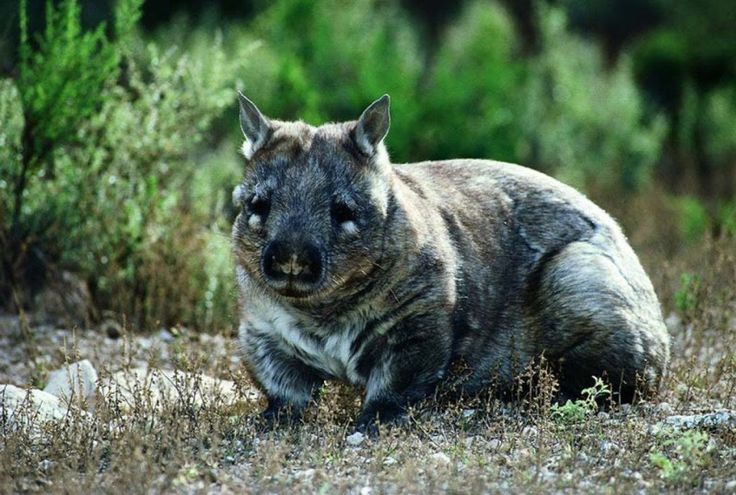
The Northern Hairy-Nosed Wombat is one of three species of wombats. These creatures have a very unique feature that not everybody knows, they have cube-shaped poop. It is currently one of the rarest large mammals in the world and is listed as critically endangered.
Threats and Population Status
Northern Hairy-Nosed Wombats are threatened by habitat loss caused by agriculture, competition for food with livestock and other invasive herbivores, and disease. Currently, there are only about 115 individuals left, all located within Epping Forest National Park in Queensland.
10. Silver-headed Antechinus
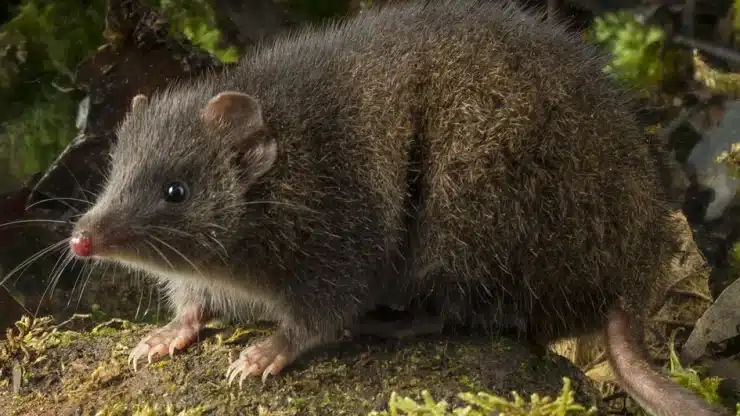
The Silver-headed Antechinus is a small marsupial native to specific regions of Queensland. These interesting creatures are known for their rigorous and short-lived mating seasons, after which the males pass away, making room for the new generation.
Threats and Population
The primary threats to the Silver-headed Antechinus are climate change and habitat degradation. With their specific habitat needs, alteration of their environment can have significant consequences.
By ensuring their habitat remains intact, there is hope for the Silver-headed Antechinus. It’s estimated that there are between 500 and 1500 individuals left in the wild.

